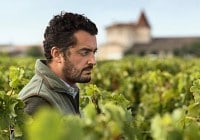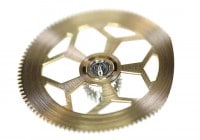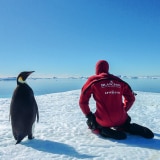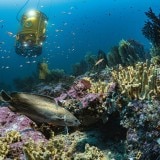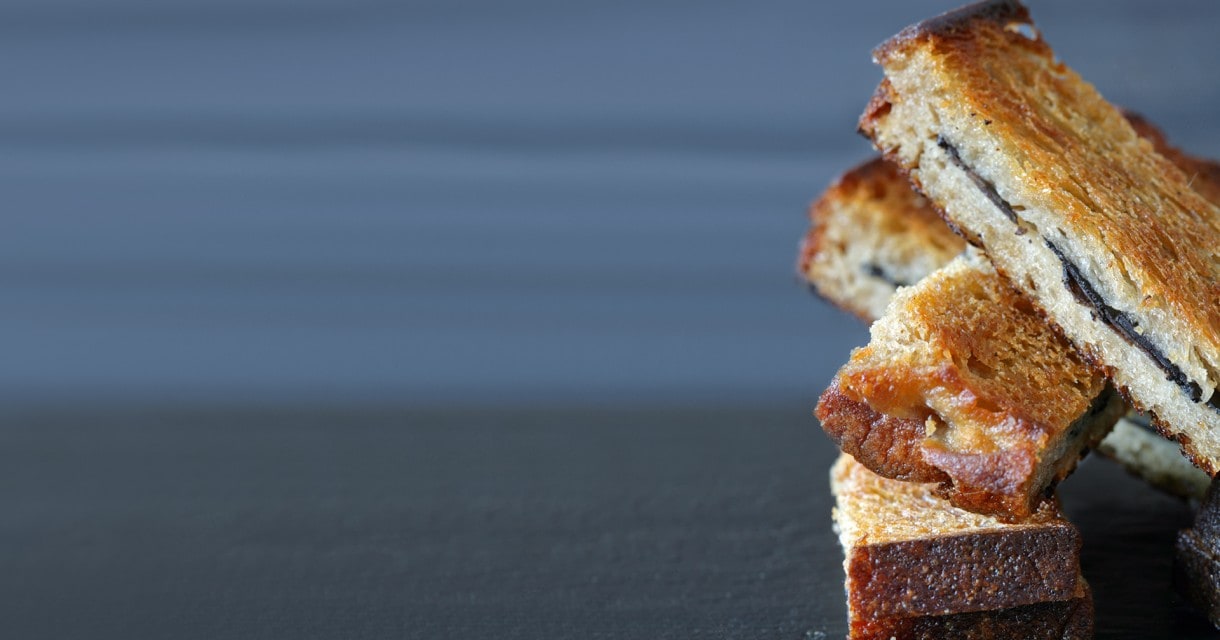
Search in Issues
Chapters
List of parts
Chapter 4
Expedition GOMBESSA
The cœlacanth, a plunge towards our origins
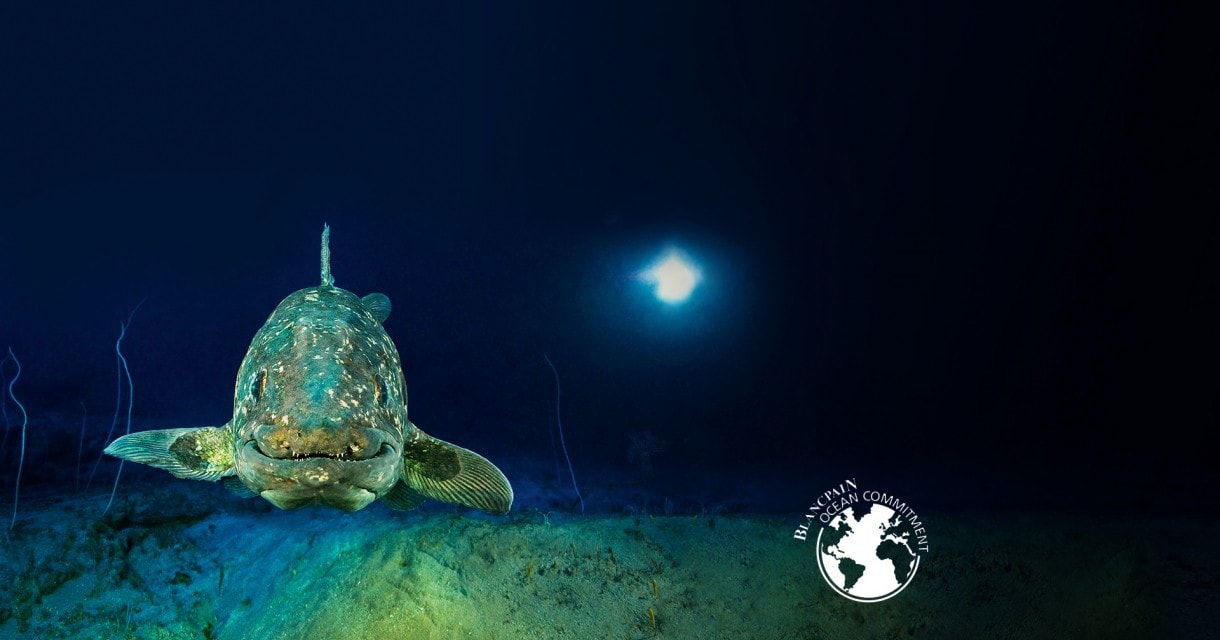
At the bottom of the sea, one is alone, deeply alone, but this ALONENESS IS ONLY POSSIBLE WITH THE SUPPORT OF OTHERS.
This story starts the previous day. Today’s dive is over and the sea disappears behind us. The road winds across a huge dune covered in trees. The road spits out tons of sand in the wake of our pick-up. Between the car and the cloud of dust is a boat on the trailer with us on top of it. Equipment is everywhere—14 air cylinders and 400 kilos of accessories for just four divers.
It takes 40 minutes to reach the base camp, 15 km from the sea. It is 3.30 p.m. Our precious high tech dive gear is laid out in a garage under the gum trees at the end of the world, where any motor from the 20th century can be repaired. Here, lost in the bush, independence is luxury.
It is here that every morning and evening, we service our valuable recyclable diving equipment. This is when we empty and replace the soda lime that has filtered the CO2 from our exhaling during the dive, and take apart the six bottles of compressed gas connected to the loop on which each breathes. The gas cocktails have to be redone with enormous precision every day. One has to be aware that each gas is only breathable at certain depths, and making a mistake could—in the best- case scenario—result in nitrogen narcosis and, in the worst case, in epilepsy and loss of consciousness.
All this takes until supper time, followed by a little time out. By the end of the day, everyone has done his bit for the team. The team... such is the paradox of deep diving: at the bottom of the sea, one is alone, deeply alone, but this aloneness is only possible with the support of others. The others are Jean-Marc and Eric, a good 15 years older than me and with great knowledge of the experimental art of decompression. I ask them to plan the dives on my behalf, lest my obsession lose sight of reason. They are the moderators. Cédric, an amazing logistician, who is indispensable when it comes to finding solutions for the smooth running of our adventure—that sexy synonym for our hell. He is also the diver who carries a couple of camera casings for me “in addition, just in case.” Then there are Tybo and Florian—both calm, enthusiastic, experienced divers (a rare cocktail)— who play porters, serve as lighting technicians and even operate the scientific cameras, consistently driven by the same incessant desire to go and see what is happening down there. And finally Yannick—physically unbreakable, never tired, and always good tempered no matter what—serves as head cameraman whose job is to film the event at 120 meters—the first time in the world that one will see a man and a coelacanth in the same picture. His composure faced with a challenge of this size either has me on my knees in admiration or climbing the wall with irritation—it just depends.

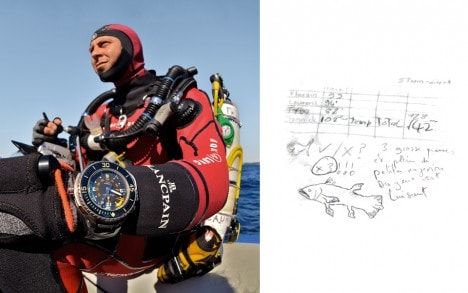
A 20-MINUTE ride takes us to the area, 3 MILES from the shore, but we are still a long way from getting in the water.
After dinner, I still need to work on my camera casings, which take a pounding from the intense pressure. This involves oiling them, checking that all the seals and o-rings are watertight, etc. I won’t even mention the sleepless night spent with a casing whose window imploded 111 meters below the surface following an unfortunate shock. A tough test of emotion after the dive, with a completely wrecked D3s, the best Nikon available, with a sensibility range of up to 100,000 iso, and which is irreplaceable if I wish to immortalize the weak but so particular underwater rays of light that survive to a depth of more than 100 meters.
We go to bed early between 9 and 10 p.m. The days are so intense that only the nights provide a little time to stop and think, and the luxury of realizing what I am in the process of achieving. As for my days, they consist solely of making decisions and actions in a tense oscillation between planning and improvisation...
Wake up at 5.30 a.m. Thirty minutes of gym to fix my back. 6.15 a.m., after a quick breakfast, its back to our dive gear to assemble the main pieces and complete the checklist, which includes the waterproofness of the closed circuit, battery check, calibration of the oxygen analyzers, checking the decompression parameters, BCD inflate and deflate functions, etc. At 7.30 a.m., we load the pick-up and leave with our 7 meter rib on the trailer. At 8 a.m., we reach the beach—a vast beach that is unceasingly redesigned by the estuary of a river with red water and by the huge tractor that takes over from the pick-up in the soft sand.
Time to go. Aboard the boat, everything has to be firmly attached—the trip out through the waves is a critical moment at which, each year, in this exact location, several boats overturn. A 20-minute ride takes us to the area, three miles from the shore, but we are still a long way from getting in the water. The GPS and sonar are switched on in order to pinpoint the location. I am in front with Peter Tim, the only person who can take us vertically to the place that is most likely to house the cœlacanths. He was the first person who, during a very deep dive in 2000, discovered a cœlacanth in a cave in a canyon. Earning his trust has not been easy:
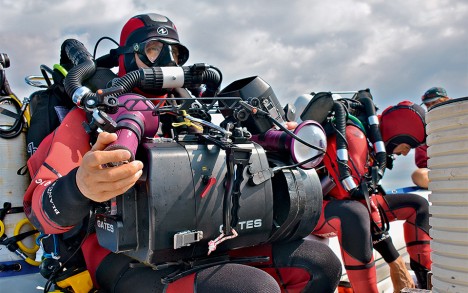
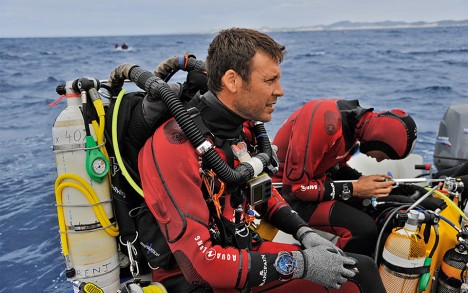
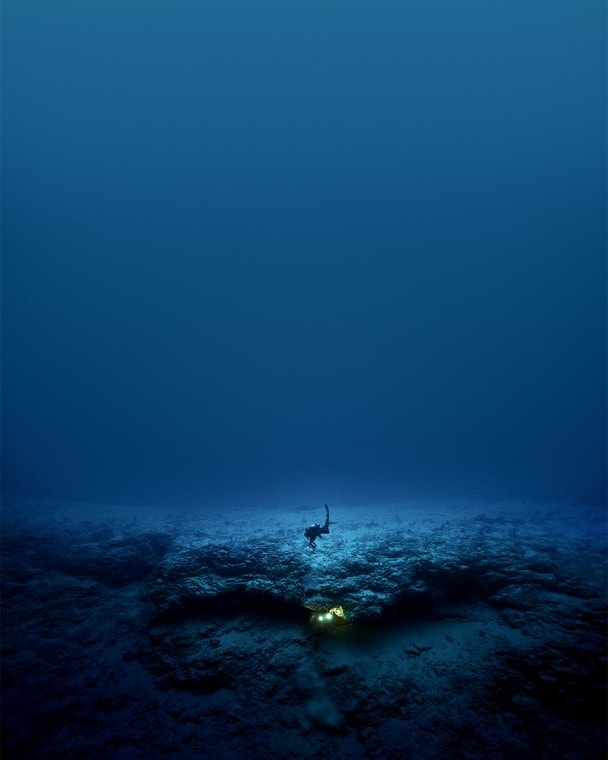
No more thinking, reflexes kick in, the apprehension is gone, THE TIME HAS COME TO GO FOR IT!
We had to make a good impression and reassure him as to our intentions before he agreed to go back to where, ten years earlier, he took two divers keen to take on this challenge... two divers who died that day. Today, the current is quite strong, so we decide to enter the water 150 meters ahead of it and the chosen arrival place. My three partners and I kit up, which is another painful moment in which we don around 70 kilos of equipment.
A final check of the electronic displays, everyone is ready and the boat is repositioned over the entry point. Since I woke up, a knot in my stomach has prevented me from smiling, a bit like the fear of forgetting something. I need to think of everything before taking action and at that point stop thinking. The most important moment approaches and paradoxically frees me. The change of phase happens with the back-tilt of the rib. No more time for self-questioning—going down chases away our concerns, no more thinking, reflexes kick in, the apprehension is gone, the time has come to go for it! The descent is rough—as vertical and quick as possible, our ears must just put up with it, and happily, in my case, the voluntary tubal patency of the Eustachian tubes works well—in other words my ears equalize by themselves without any intervention from me.
This means that I can go down even faster. In less than a minute I reach a depth of 50 meters in the open water, and when I get here, I slow down a bit, looking behind me to see if my companions are with me, and check my compass to set the course to follow. 60, 70 meters—I maintain my course and the speed of my descent. Eighty meters—I start to watch out for the edge of the canyon. Ninety meters signals a transition, since I can see the contrast between the vertical, obscure rock of the canyon on the one side and the white expanse of sand on the other! The tough yet liberating descent has gone well. Now comes a delicate phase that I have been obsessing about since I got up—not messing up the landing. If this is badly managed, the entire exploration will be cancelled and there is no way of attempting another dive on the same day...
One hundred meters and I reach the top of the cliff with its gorgonian and black corals, pineapplefish, barberfish with mauve spots, and golden striped soapfish, all living indications that tell me, in case I wasn’t already aware of it, that I have gone past 100 meters and am entering the aphotic biological universe, that dusky zone where there is less than 1% sunlight. Another planet.
And yet... only 100 meters lies between us and this other planet; an opaque, heavy layer. One hundred meters of water, 100 meters high—nothing at all, really— and seen from space a virtually negligible ribbon. One hundred meters is as if it were but a single step to take, barely a few kicks with one’s fins, and yet I have changed worlds—a veritable spatiotemporal door
Few kicks with one’s fins, and yet I have CHANGED WORLDS
worthy of the best in science fiction—my very own “Stargate.” An extraordinary passage which, in just a few minutes, is supposed to take us to an animal which supposedly has not been visited for 65 million years... Something straight out of sci-fi, I’m telling you!
One hundred and twenty meters, and the rocky wall with its horizontal caves lie before us. The search begins here and the chronometer is ticking. Here, where every minute counts, and where I am paradoxically collecting a lifetime of memories. Each cave, each overhang, is swept by our torches. Today, fate smiles upon us. I see it right from the second cave! Sitting in the entrance, with all its lobe fins working, the imposing cœlacanth is there, indifferent. Our descent took less than three minutes. How can one believe that this other planet is but three minutes from our own? Time no longer has the same meaning. The proof? The way there takes three minutes—the return trip five hours.
I move slowly closer to it, for I am, after all, approaching a dinosaur. The closer I get, the stronger the emotion, and I know I have to put this aside and concentrate. I need to observe properly, to illustrate this encounter properly, since no other naturalist photographer has ever found himself face to face with this creature. I keep my distance, fearful of scaring it. How will the cœlacanth react to a diver? No one really knows. After so much preparation, the worst-case scenario would be to frighten the living legend and see it disappear, thereby challenging the conviction that I have defended for so long: my belief that wherever we go physically ourselves, we will achieve more than robots.
The first emotion is that I know it has seen us—it turns its head towards me but doesn’t go and hide at the back of its den! It is curious about us? No, I don’t think so— and I must avoid any such childish mystical thoughts. Indifference? Yes, I think so and I am happy about it: I want this unprecedented, much dreamed-of picture, this moment in nature that I am finally being granted, to take place “as if I wasn’t here” and thus remain intact, wild, natural.
Contrary to all expectations, it emerges from its cave and moves along the wall. We follow. For slow movement, it appears to use its anal fin and second dorsal which turn like slow propellers. It is enormous—nearly two meters long I think. I can clearly see the short white spikes that cover the blue stripes on its back fin. With every movement it makes, I can see its enormous primitive scales, also covered in thin spikes, delicately overlapping. I can also see the bony plates of its skull, its spiracle at the very end of its large gill covers, the little conical teeth that protrude from its fleshy lips, the deep holes on the mouth of its system of sensitivity

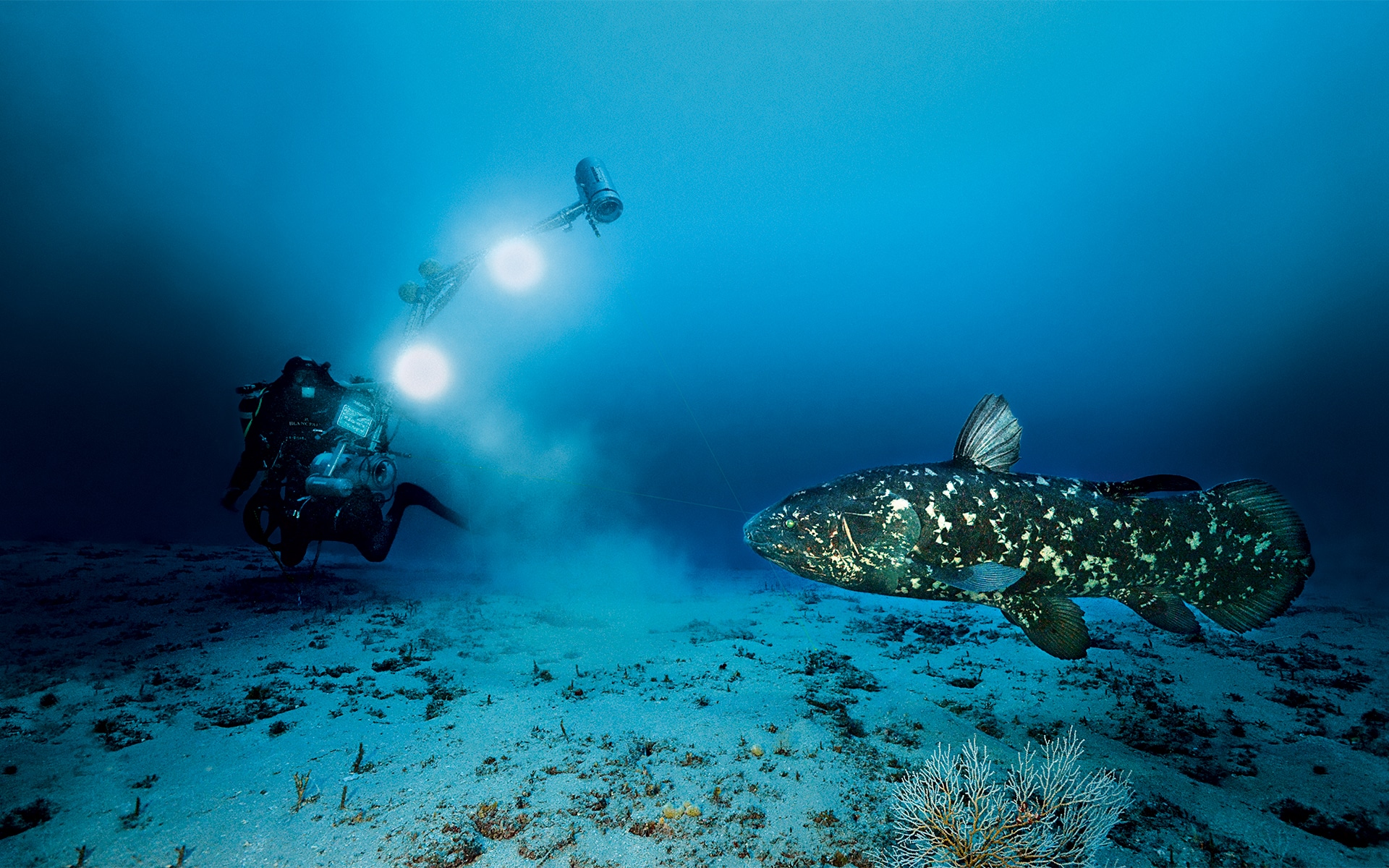
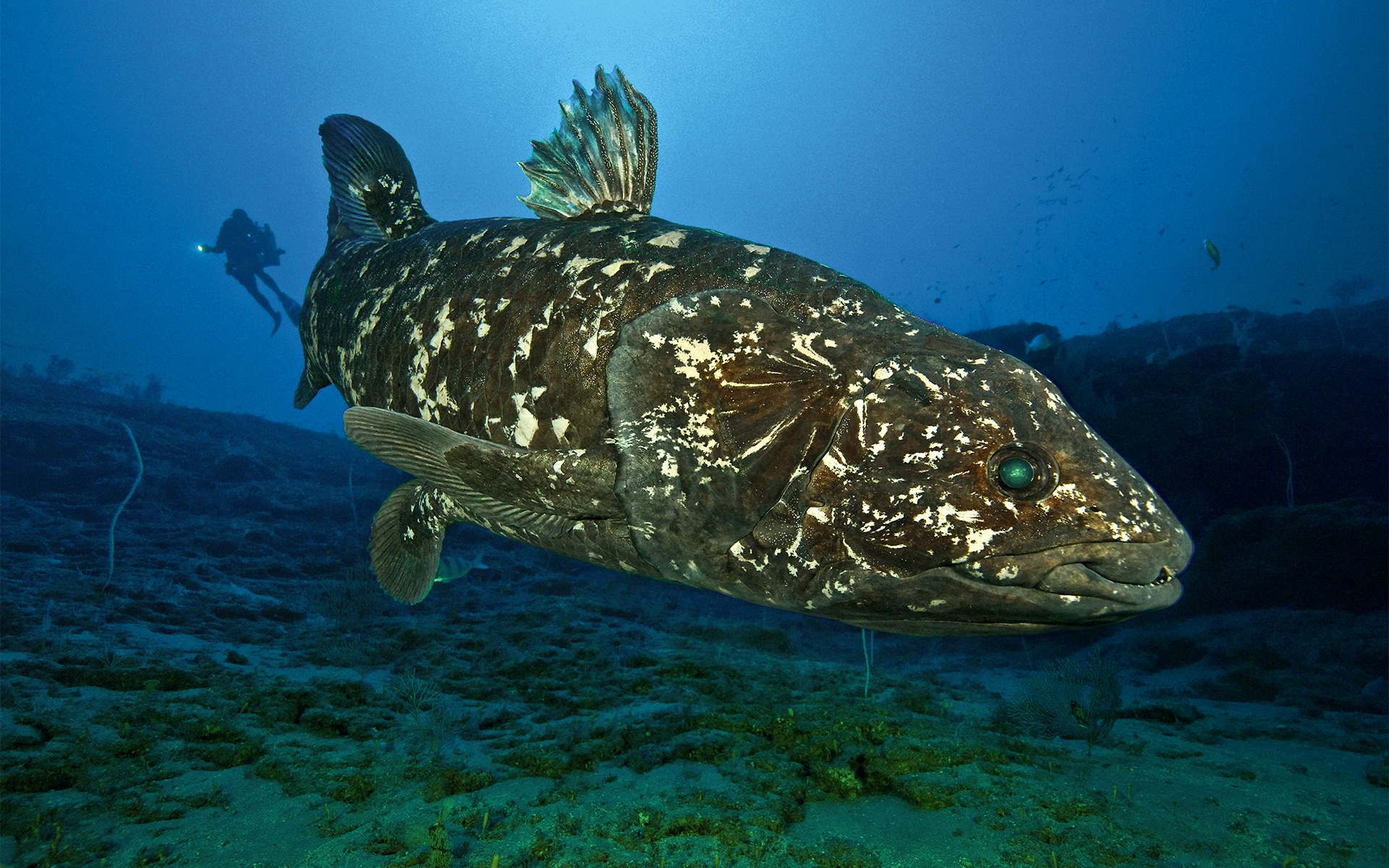
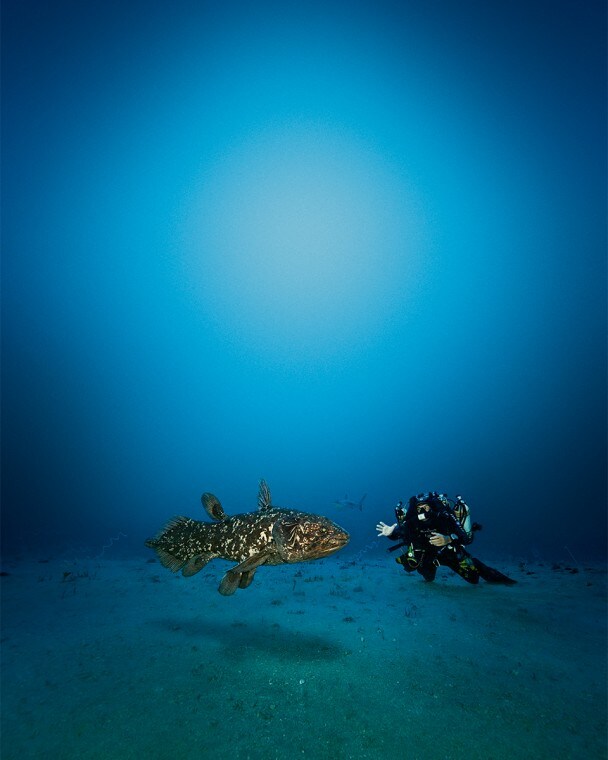
There are more human beings that have walked on the moon THAN THERE ARE PEOPLE WHO HAVE SWUM WITH A CŒLACANTH.
to electric fields... It is to describe the feeling of intense inner joy. This is an addictive combination: The experience of beauty and the exhilaration of privilege. But there is more than that: At this exact moment, my hopes, my determination over the past four years, my strongly defended beliefs, my totally concealed doubts, all these emotions are crystallized in this amazing meeting. We are swimming next to our last aquatic ancestor—in its own environment—and we are the first to do it. There are more human beings that have walked on the moon than there are people who have swum with a cœlacanth.
The experience of the moment is powerful, but we must remain focused on our work as naturalists. I face a cruel dilemma in that I want to admire it but I must observe it: I do not have a second to lose. The minutes pass—34 exactly—until the cœlacanth finally comes back to the edge of the canyon, rushes over it and disappears into the black beneath my fins. “Oh, to be able to follow it some more...” I am sure that we all had the same heady, obsessive, suicidal idea...
It is time for us to pay the price of this privilege. I look at my dial—235 minutes of compulsory decompression before we can come out into the fresh air. If I add the time spent in the depths and the unexpected events involved in coming up, I know that we should emerge from the water five hours after entering it. The slow ascent begins. The decompression stops are longer and longer the closer you get to the surface. And finally, half the dive is spent between 12 meters and the surface.
For the last little while there has also been a very aggressive white-tip reef shark with us which swiftly calms our giggles. It is young (less than two meters), impetuous, and annoyed, I assume, because of the two enormous hooks which are sunk in its jaw and the several meters of nylon that it is trailing and which are injuring its fins. Every day, it harasses us from the beginning of our ascent and up to 15 meters—a full hour and a half during which we need to keep an eye on it.
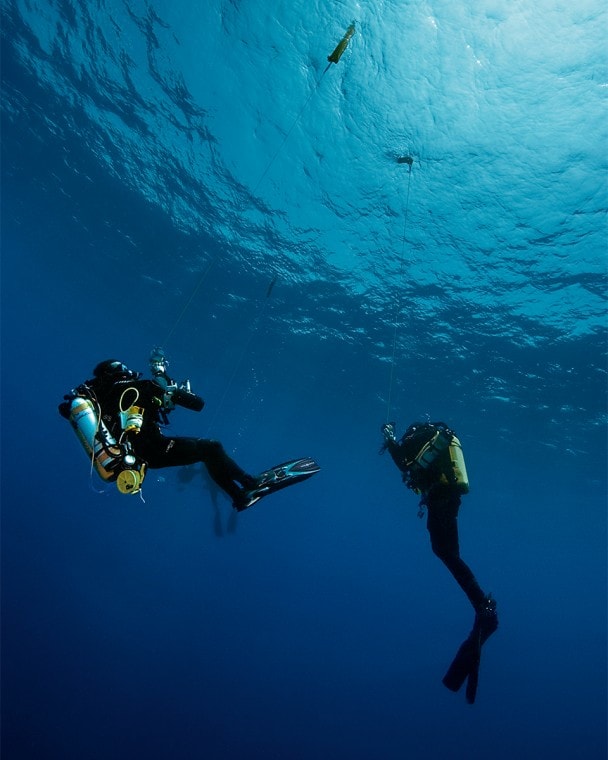
We have just emerged from the water and yet the EVENT TOOK PLACE MORE THAN FOUR HOURS AGO.
On three occasions I have had to fend off its advances and even had to whack it on the nose... Thinking back, I realize it is the only time in my life that a shark has come close to the point of contact with absolutely no food incentive—amazing. Anyway, there is plenty to keep us occupied, including ensuring that our dive gear is working properly in this critical physiological decompression phase. We are constantly checking that our gas mixture is transforming as it should. Slowly, helium is replaced with oxygen, finishing up with pure oxygen about six meters from the surface, where we will spend the last two hours.
The final hour is often uncomfortable. The weight of our dive gear starts to make itself felt. The swell shakes us around enough for everyone to complain about their lumbar regions when they get out of the water. At last the five last minutes arrive. Everyone turns their reels gently to the surface. The boat is there, having drifted with us. Once aboard, I can see a moving combination of expression—fatigue and satisfaction—on faces now devoid of their masks and snorkels. After more than four hours, everyone can at last talk, and tell his own story, always a little different from one another, proof that at these great depths, all our senses are slightly distorted and result in different impressions. It’s a weird feeling: We have just emerged from the water and yet the event took place more than four hours ago. “It was great, but it was a while ago...” It’s almost already imperceptibly receding into our memories—once again proving that we have returned from another planet...
The tension has finally gone, but the day isn’t over. Back to the beach, off-loading the equipment, loading the pick-up, hitching the boat, etc., and everything starts over like the day before. We are already preparing for tomorrow. Forty days of this, one after the other. For me, it is a culmination point, which I hope will mark a special phase and is in any event a very special moment in my life.
The above account corresponds to a perfect day, one in which everything went according to plan and when the cœlacanth was there. But such was not always the case. In fact, it generally wasn’t there and sometimes incidents occurred such as shortness of breath, finding
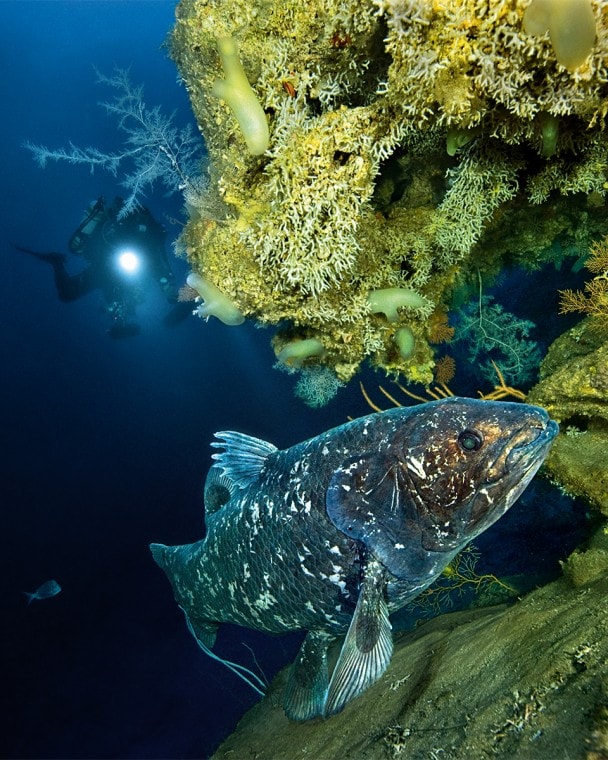
One HUNDRED AND SIXTY MINUTES of enjoying such intimacy for a total 185 diving hours. It’s both pitifully little and yet MORE THAN I EVER HOPED FOR.
ourselves off-course, equipment issues, camera problems—all resulting in a somewhat completely unsuccessful dive. On those days, it is hard to maintain one’s enthusiasm when all those hours of preparation are not enough to make the most of those few dozen minutes in the depths. “All this for that?!” is the kind of sinking feeling that threatens us each evening.
Deep dives are like that—sometimes unforgettable but always thankless. If I take a look at the logbook of my dive computer, I see that if you add up all the dives, I spent exactly 160 minutes next to the coelacanth. One hundred and sixty minutes of swimming with the oldest fish in the world. One hundred and sixty minutes of enjoying such intimacy for a total 185 diving hours. It’s both pitifully little and yet more than I ever hoped for.
For 30 days in 2010, and then 40 days in 2013, we learnt a lot about it, but each discovery raised more questions. After all, what do we know about the cœlacanth? Virtually nothing except that it exists!
During the last expedition, we performed a whole series of scientific protocols that were both complex and daring given the depth where this all took place. The results are still being evaluated, and we are extremely impatient to find a bit more about the most legendary fish in the world. I promise to share it with as many people as possible in the very near future!
www.andromede-ocean.com
www.coelacanthe-projet-gombessa.com
Other issues
Don't miss the latest issue
Sign Up for New Releases


